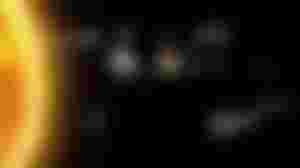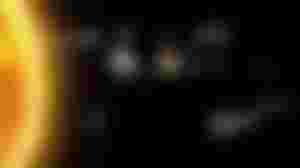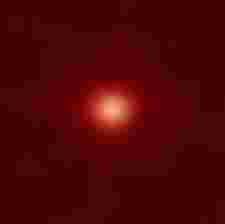October 24, 2006
The session of the International Astronomical Union (IAU) is held in Prague, the capital of the Czech Republic. Journalists are waiting. IAU bombed the session! Pluto, the 9th planet of the solar system, is no longer a planet but a dwarf planet! They also mentioned two more dwarf planets. Jenna (now Eris) and Ceres!

Clyde Tombau would have suffered greatly if he had survived. Because Pluto, which he discovered in 1930, was removed from the list of planets in 2006!
There was a commotion in the science court. Because the term dwarf has never been used with the planet before. There were only dwarf stars. As a result, it is a new discovery. So scientists had a lot of questions. The first question that arises is-
What is actually a dwarf planet?
The word "dwarf" literally means small size. Thus, a dwarf planet is a small or short-sized planet. This definition currently only applies to the solar system. After the controversy over the planet Pluto, the organization defined the dwarf planet and included Pluto in the list of dwarf planets. So far, the number of dwarf planets is five. These are Ceres, Eris, Haumea, Makemake and Pluto.
Well, got it. So what's the difference with the planet?
A dwarf planet does not have to remove any other astronomical object in its immediate vicinity. This is the only difference between the two. At present five dwarf planets have been found whose names have already been mentioned. Other objects that could receive the status of dwarf planets are: 9038 Sedna, 90482 Orcas and 50,000 Kuawar. From its discovery in 1930 until 2006, Pluto was the ninth planet in the solar system. But now many objects like Pluto were being discovered in the solar system. The most notable of these is Eris, which is slightly larger in size than Pluto.

Well, so how do I recognize this dwarf planet in the sky? What are its features?
Introducing the dwarf planet at the IAU meeting, it was said that the cosmic object would be called a dwarf planet.
1. Which will have a sufficient mass, so that the great gravitational force of the object will give it the shape of a sphere, i.e. the object must be spherical.
2. Which will orbit the sun in a specific orbit.
3. Which cannot move objects around its own orbit.
4. And that's not even a satellite.
This means that if there is an astronomy in the sky which has these 4 times in between, then they can be called dwarf planets.
So now let's come to the identity of the dwarf planets
Mr. Abhaga The Pluto is coming on stage first:
Pluto, the ninth planet in the solar system we have known so far, has been downgraded from a planet to a dwarf planet. Like the other six planets, Pluto has almost all the features it needs to move objects around its orbit. In fact, Pluto is one of the billions of cosmic objects floating on the Kuiper Belt at the far end of the solar system, after Neptune. So Pluto's orbit and orbit are different from other planets. Pluto was named the smallest dwarf planet in the solar system in 2006. Pluto, rich in methane and carbon dioxide, travels only 6,000 km. In diameter and the distance from Pluto to the Sun is about 592.41 crore km. ... Once in a full rotation, Pluto takes 7 days 12 hours and once a full rotation around the Sun takes 246 years. On the surface of Pluto
Average temperature - 230 C.
Next up is older brother Eris:
It is the largest dwarf planet. Greetings. Eris is a spherical cosmic object floating on the Kuiper Belt after Neptune.
Eris is the largest dwarf planet, about 6 light-years from the Sun. Eris, part of the outer dwarf planet, was discovered in 2005.
Ceres, younger brother:
Located between Mars and Jupiter, Ceres Dwarf is the largest asteroid in the solar system. It was discovered on January 1, 1801 by the Italian astronomer Giuseppe Piazzi. The asteroid is about 100 km. It has an equatorial diameter and is only 41.39 crore km away from the Sun. Ceres once took 9 hours and 4 minutes in full rotation and 4 years and 221 days in solar orbit.

Speed Boss Haumeyah
Speed's key! No matter how far away, run first! Haumea is the farthest planet, beyond Neptune. In 2004, an investigative team led by astronomer Mike Brown discovered Haumeya. However, it was recognized as a dwarf planet in September 2006. Its mass is one-third that of Pluto and one-fourth that of the earth. It takes about 274 years for the sun to turn. So far two of its satellites have been discovered. On this dwarf planet one day is only four hours. The reason is the rapid rotation. It rotates faster than any other object in the solar system, more than 100 kilometers wide.
Sister Makemake:
This dwarf planet has an important role in the solar system. The location of the planet is with Eris. The planet was discovered in 2005. The International Astronomical Union was able to change the definition of a planet and come up with the theory of a dwarf planet by looking at Eris and Makemake. This planet is not as fast as Haumera, yet the day here is 22 hours. The surface is thought to be made of ice and rock.
So, roughly all these five are dwarf planets. Although many other planets resemble dwarf planets, they are no longer included as dwarf planets because they do not have all the features. In the near future, Pluto may regain its planetary status.
Have a good day today!



very interesting article.